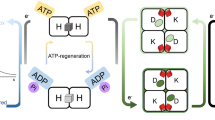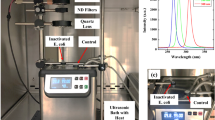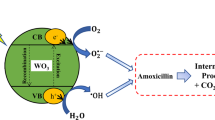Abstract
MANY different theories on nitrogen fixation by Azotobacter cells have been presented, among them the proposition of Wilson and Burris1 that the nitrogen molecules, which are absorbed and take part in the reactions leading to nitrogen fixation, are in an activated state. These authors also suggest that this activated form might comprise a molecule possessing an energy greater than some unknown critical value.
This is a preview of subscription content, access via your institution
Access options
Subscribe to this journal
Receive 51 print issues and online access
$199.00 per year
only $3.90 per issue
Buy this article
- Purchase on Springer Link
- Instant access to full article PDF
Prices may be subject to local taxes which are calculated during checkout
Similar content being viewed by others
References
Wilson, P. W., and Burris, R. H., Bact. Rev., 11, 41 (1947).
Nicholas, D. J. D., Fisher, D. J., Redmond, W. J., and Wright, M. A., J. Gen. Microbiol., 22, 191 (1960).
Cooper, C. M., Fernstom, G. A., and Miller, S. A., Indust. Eng. Chem., 36, 504 (1944).
Morris, D. L., Science, 107, 254 (1948).
Scott jun., T. A., and Melvin, E. H., Anal. Chem., 25, 1656 (1953).
Russel, Jane A., J. Biol. Chem., 156, 457 (1944).
Author information
Authors and Affiliations
Rights and permissions
About this article
Cite this article
ZACHARIAS, B., HEDÉN, CG. Effect on Biological Nitrogen Fixation of Nitrogen Gas treated with Ultraviolet Radiation. Nature 190, 817–818 (1961). https://doi.org/10.1038/190817b0
Issue Date:
DOI: https://doi.org/10.1038/190817b0
Comments
By submitting a comment you agree to abide by our Terms and Community Guidelines. If you find something abusive or that does not comply with our terms or guidelines please flag it as inappropriate.



